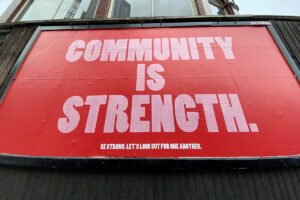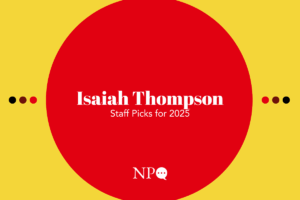
This article was updated on August 6, 2024.
Johns Hopkins Medical School has, for years, garnered national attention for being the recipient of large gifts from the university’s alumnus and megadonor, Michael Bloomberg, and his philanthropic organization, Bloomberg Philanthropies.
Can tuition-free medical school help alleviate medical deserts?
In 2018, Bloomberg Philanthropies gifted $1.8 billion to Johns Hopkins; in 2024, the foundation made another seismic gift to the institution, an additional $1 billion to support tuition-free medical school for families making less than $300,000 per year. Fees and living expenses will also be paid for households making less than $175,000. The latest award will also increase financial aid for students in nursing, public health, and some other nonmedical graduate schools.
Over time, Michael Bloomberg, through his personal fortune and Bloomberg Philanthropies, has donated approximately $14.4 billion to charity, $3.5 billion of which has gone to Johns Hopkins. The gift to the university is obviously substantial; to the extent that Johns Hopkins serves Baltimore, MD, the gift may also have a significant positive impact on the city.
When we zoom out to see how such gifts impact the US medical workforce writ large, several important questions begin to emerge: Can tuition-free medical school help alleviate medical deserts? Is there any indication that tuition-free medical schools will increase the number of physicians in specialties where demand has outpaced supply (such as primary care, obstetrics and gynecology, and mental health)?
Though large awards to medical schools cannot magically solve all the factors contributing to medical deserts and physician shortages, according to the philanthropists behind the gifts and the schools that receive them, they not only help diversify the physician workforce but also allow aspiring physicians to pursue a course informed by their passions rather than by what is most financially lucrative.
Bloomberg Philanthropies Plan to Improve American Health and Education
In a public letter, Michael Bloomberg framed the 2024 gift as a way to address health and education issues exposed during the global COVID-19 pandemic. According to Bloomberg, “These twin challenges—declining levels of health and education—are too big for nonprofit organizations to tackle alone, but they can help lead the way.”
These gifts are part of a string of megagifts providing tuitionless or at least debtless medical school to aspiring doctors.
The letter discusses the lack of primary doctors in medicine, noting that “the high cost of medical and nursing school is keeping away too many prospective students,” and adding that “those who graduate often choose to work in the most lucrative specialties in order to repay their debts, rather than in fields and communities that are most in need.”
Bloomberg’s letter went on to say that the 2018 gift “helped to change the makeup of the student body. Over the course of a decade at Johns Hopkins, students from the families with the greatest financial need went from making up only nine percent of the student body to 21 percent of the student body—a higher percentage of high-need students than there is at Harvard, Princeton, MIT, and nearly every other Ivy League and Ivy League-adjacent institution.” Undoubtedly, the 2024 gift will also increase the number of students with financial need who can access medical school.
An Emerging Trend
Though Bloomberg’s investment in Johns Hopkins is especially noteworthy, these gifts are part of a string of megagifts that provide tuitionless or at least debtless medical school to aspiring doctors.
On February 26, 2024, Albert Einstein College of Medicine at Montefiore Medical Center announced that “no student at Einstein will have to pay tuition again.” This was made possible by a $1 billion donation from Ruth L. Gottesman, Ed.D., a longtime professor, chair of the Einstein board of trustees, and board member of the Montefiore Health System.
According to the school, “This donation radically revolutionizes our ability to continue attracting students who are committed to our mission, not just those who can afford it. Additionally, it will free up and lift our students, enabling them to pursue projects and ideas that might otherwise be prohibitive.”
In the announcement celebrating what they refer to as an “extraordinary and unprecedented gift,” the school went on to add, “We will be reminded of the legacy this historic gift represents each spring as we send another diverse class of physicians out across the Bronx and around the world to provide compassionate care and transform their communities.”
In 2023, Kenneth and Elaine Langone’s $200 million dollar gift to the NYU Grossman Long Island School of Medicine made full-tuition scholarships available to all students. Unlike other programs, the tuition-free program concentrates on future doctors within specific specialties: internal medicine, family medicine, pediatrics, obstetrics and gynecology, and general surgery.
The recently established medical school, Kaiser Permanente Bernard J. Tyson School of Medicine, is offering free tuition to its first six classes—from the class of 2020 to the incoming class of 2025. Interestingly, Kaiser Permanente, the healthcare juggernaut that owns hospitals, clinics, and an insurance plan, is tapping a portion of its revenue used for “community benefits,” which, according to the New York Times, “all nonprofit hospitals have to provide to keep their tax-exempt status.”
Since Kaiser Permanente operates on tens of billions of dollars each year and funnels billions into its community benefits programs, the Kaiser Permanente medical school was able to offer free tuition for five classes of students without relying on big donors.
Sign up for our free newsletters
Subscribe to NPQ's newsletters to have our top stories delivered directly to your inbox.
By signing up, you agree to our privacy policy and terms of use, and to receive messages from NPQ and our partners.
Mark Schuster, the founding dean and chief executive of Kaiser Permanente School of Medicine, told the New York Times that students enrolled in the school will start “integrated clerkships” in their first year of medical study and forgo much of the lecture courses that are typically offered in medical schools. The clerkships will start with primary care. Surgery, obstetrics and gynecology, pediatrics, and psychiatry will be added to the second year of instruction.
Robert C. Smith’s 2019 gift of $34 million to pay off the debts of all medical school graduates at Morehouse School of Medicine—a historically Black men’s college in Atlanta, GA—also created a legacy for the institution. The debt burden at Morehouse, like many other medical schools, is significant. According to an article in Marketplace, “more than 85% of students take out loans” to attend the institution. To make matters worse, this debt often compounds with undergraduate school debts, which many students carry with them as they enter medical school. In 2019, the year of Smith’s pledge, the debt at graduation averaged “between $35,000 and $40,000” per student.
Though it is still too early to tell the full scope of the legacy of Smith’s gift, recipients from Morehouse are continuing their education, supporting other family members who aspire to earn a college degree, and building generational wealth, among other aspirations. At least one student whose debt was relieved started their own nonprofit organization.
Many of the medical schools that have been gifted the large awards for free or low-cost tuition—such as Morehouse and Johns Hopkins—serve diverse student populations. This is crucial, as research has proven that minoritized and underserved populations have better health prospects when paired with a physician who shares their background and can better relate to their experiences.
Though research shows that this trend holds for women, sexually and gender diverse individuals, people with disabilities, and people of color, it is especially apt when it comes to Black Americans. Research published in JAMA Network Open found that, on average, “every 10-percent increase in county-level Black PCP [primary care physician] representation was associated with 31-day higher age-standardized life expectancy among Black individuals.” In other words, Black doctors literally help Black patients live longer.
Big Money Is Not Enough
Since the 2023 Supreme Court decisions banning race-conscious admissions, diversity, equity, and inclusion (DEI) programs at medical schools are in a precarious position. When institutions that have historically supported doctors of color offer completely free or debt-free tuition, they can help diversify the physician workforce despite anti-DEI backlash.
Medical deserts, or places that lack adequate access to medical professionals, hospitals, and other sites of clinical care, are increasing throughout much of the country. Due to several factors, the United States is also facing a growing shortage of physicians. Though the reasons behind the critical shortages within some medical specialties and the lack of doctors within specific areas are complex and multifaceted, at least part of the issue relates to the incentive structure and job prospects offered to physicians.
While debt-free or completely free medical school can help bring in lower- and middle-class students, it cannot guide them toward a specific path.
According to experts in the healthcare workforce and health economics who spoke with STAT, while gifts like the ones made to Johns Hopkins, Albert Einstein, and Morehouse deeply impact their recipients, “they are likely to have a limited impact on the broader medical system—be it in terms of expanding the healthcare workforce or moderating the price of medical services.”
In fact, according to STAT, the large donations do more for medical school’s competitiveness in an increasingly tight market than anything else: “The outcome of the policy may be to affect where top candidates will go, rather than actually expand the pool of doctors, because the overall number of spots available wouldn’t grow. Nor is it expected that the number of residency spots, even now inadequate to place the current, limited number of graduates, will expand.”
The article goes on to argue that “if there was free tuition for all, or most, medical students, that wouldn’t necessarily address predicted shortages of doctors, nor is it likely to increase the chances that doctors pick less remunerative specialties such as primary care.” In other words, though the gifts remove financial obstacles for medical school students, they do not ensure that these newly minted doctors will choose specialties or areas of the country with lower pay and fewer career-related incentives.
In addition to funding, medical schools must also develop programs that effectively train future doctors to serve in the areas most crucially needed for the country’s health and wellbeing. Through establishing programs that encourage certain specialties over others, the approach taken by NYU Grossman Long Island School of Medicine and Kaiser Permanente could certainly help conquer physician shortages in specific areas of medicine, but it’s still unclear if these approaches would have any impact on alleviating medical deserts.
The reality is that some locales can entice physicians with higher salaries, opportunities for networking, and advancement in highly sought after metropolitan areas. Some specialties pay two or three times more than others. If these asymmetries persist, there will continue to be imbalances in the physician workforce.
Ultimately, while debt-free or completely free medical school can help bring in lower- and middle-class students, it cannot guide them toward a specific path. Nor will it ensure that they practice medicine after they graduate or stay in medicine for the long haul.
While large gifts that relieve the financial burden of medical school help take some of the pressure off students, for lasting change we need wider, systemic changes to medical education.
Relying on the generosity of multimillionaire and billionaire donors rather than meaningful legislative and policy reforms will not help us achieve a more inclusive, equitable, and sustainable healthcare system. We need more than big money, we need to make big bets on the people and places the medical establishment has, for far too long, left behind.











